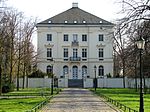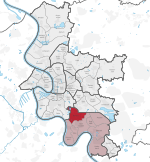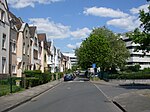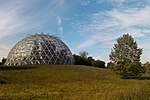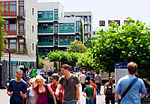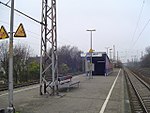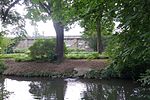Düsseldorf-Itter
Düsseldorf region geography stubsUrban districts and boroughs of Düsseldorf
Itter is an urban borough of Düsseldorf. It is located near to the river Rhine, adjacent to Himmelgeist, Holthausen and Reisholz. Its name comes from the small river called the Itter.
Excerpt from the Wikipedia article Düsseldorf-Itter (License: CC BY-SA 3.0, Authors).Düsseldorf-Itter
Am Broichgraben, Dusseldorf Itter (Stadtbezirk 9)
Geographical coordinates (GPS) Address Nearby Places Show on map
Geographical coordinates (GPS)
| Latitude | Longitude |
|---|---|
| N 51.165 ° | E 6.8152777777778 ° |
Address
Am Broichgraben
Am Broichgraben
40589 Dusseldorf, Itter (Stadtbezirk 9)
North Rhine-Westphalia, Germany
Open on Google Maps
